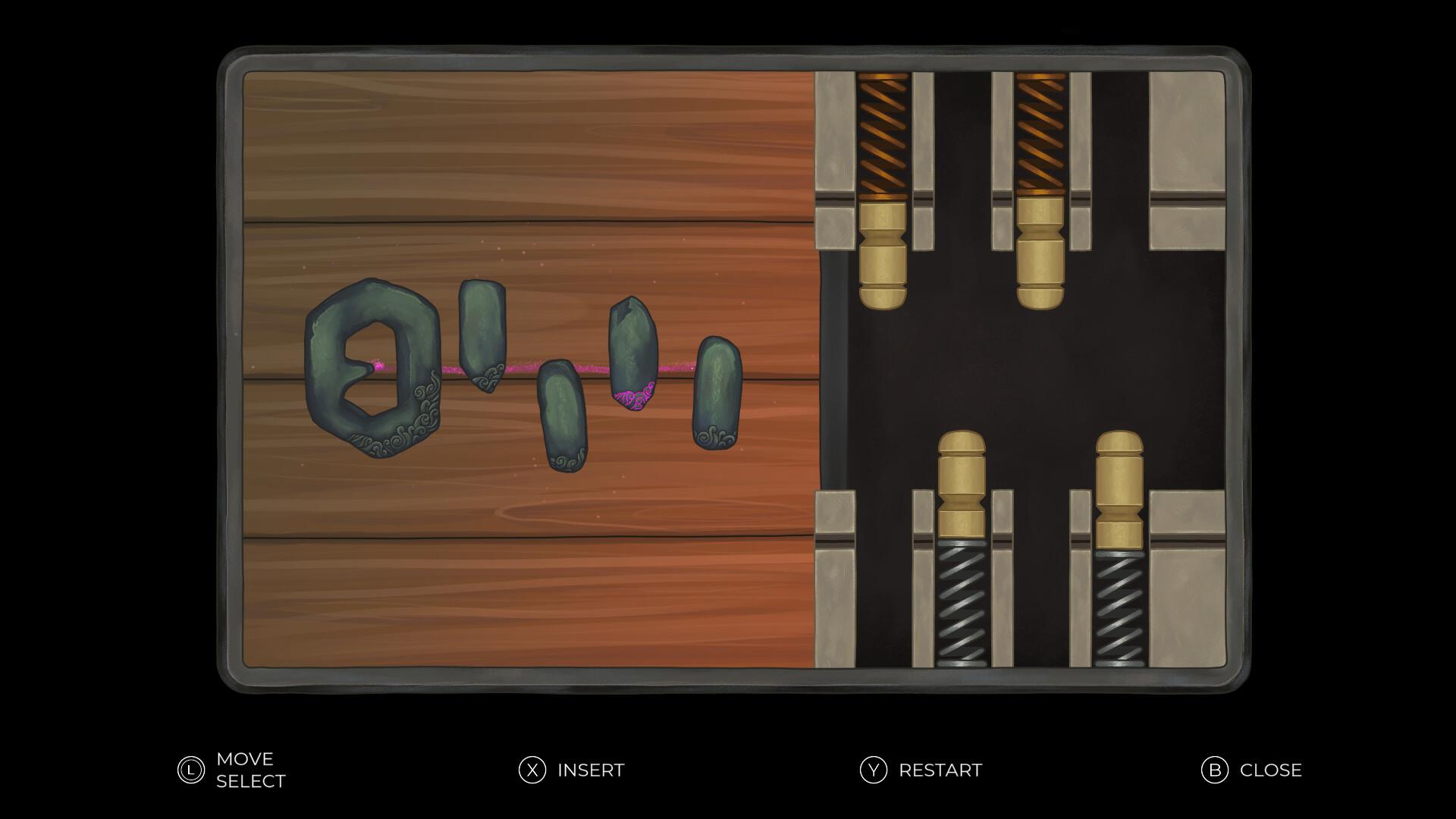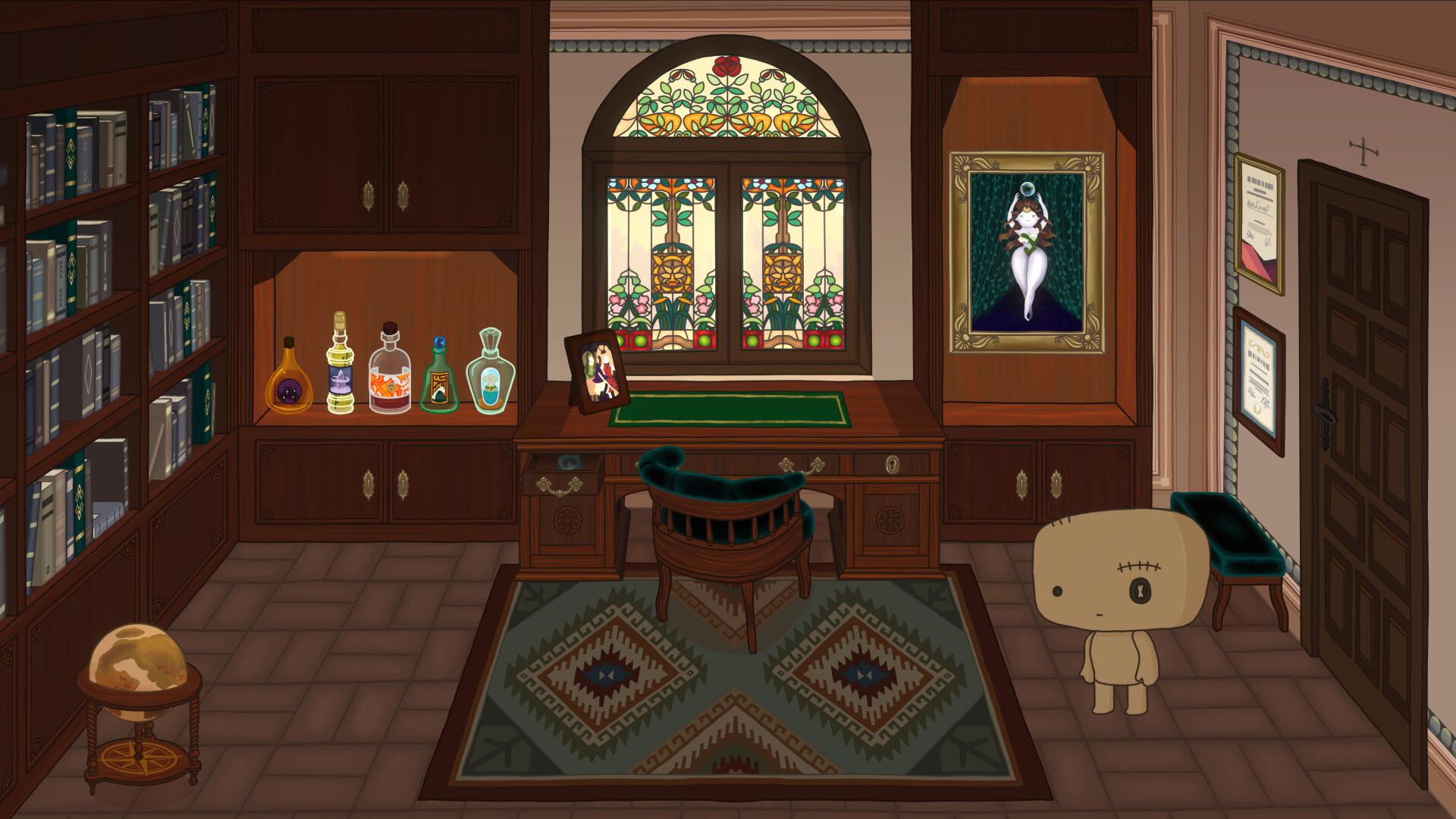
CLeM (XS) - Review
by Lee Mehr , posted on 17 August 2024 / 4,312 ViewsUpon beginning this adventure, the title's intentional spelling error comes into focus. Hearing the whispers of a little girl saying "bring me beauty," you awaken as a disfigured knapsack doll with a book titled 'CLeM' right next to your stubby feet. Its table of contents contains multitudinous qualities – the aforementioned beauty, anger, temperance, etc. – with a unique alchemical inscription connected to each one. Turning to the Beauty page, you find the picture and description of a butterfly. A rather roundabout way to say "bring me a butterfly;" then again, it wouldn't be much of a point-n-click adventure if the voice in your head gave blunt commands. That's what Mango Protocol understands: showing reverence to the genre by baking in as many mysteries as possible.
As this now-sentient stuffed doll gathers his bearings and grabs the book, the natural state of adventure games kicks in: go to and fro across a Victorian mansion to internalize your current limits, grab whatever loose items you can, remember the handiness of combining backpack items, and use said items where applicable. If you've played one, you've played them all. What CLeM does especially well is the intuitively simple signposting; it's easy to map out what upcoming rooms will be important later without hearing the protagonist say a word.
Given the silent protagonists' waning popularity for over a decade now, it's a welcome nuance that naturally melds with this story's context. In place of monologuing, he's an avid note-taker and artist, wanting to trace out important landmarks and write through the process of moving ahead. Since there's no formal hint system, the CLeM book is vital in expatiating necessary puzzle-solving details; further, it also doubles as a window into this doll's interior. The situation seems utterly nonsensical to him, but there's an internal drive to see to the little girl's needs and learn more of the world.
Around this estate – practically plucked from a Cartoon Network show – are a number of features implying darker secrets hidden within its walls. Leaving the uncomfortable cellar behind isn't initially a breath of fresh air given there's such a dirty kitchen and water-logged dining room with a leak sneaking in below a boarded-up door. But these unpleasant sights are meant to stick out and create clear distinctions between other parts of the house. As an advertised "Puzzlevania," each area feels economic with establishing its identity and leaving breadcrumbs for later brainteasers. It's purposive design that effectively disguises new avenues of exploration despite being right in front of your eyes.
Items are a mix of one-off solutions and permanent fixtures in your arsenal. With the former, it's the ordinary template of finding something – like, say, a valve – and placing it back in the right place; with the latter, objects - like a handy teleportation ring or a magical magnifying glass that reveals secrets - are consistently utilized. Perhaps the best example is the Runic Key: you have to correctly adjust all four pieces of the key to properly align with a lock's four internal pins. Initially, adjusting the key to fixed silver-plated pins is relatively simple, and then gold-plated pressure pins pushing against the key create a limited time window. It boggles the mind how a modest indie team designed what should now be the de facto lock-picking mechanic for a fantasy world.

Past individual mechanics or clear-cut visual information, the puzzle design excels here because the elements click in unison. The impressive diversity of puzzle styles, the thematically consistent callbacks to alchemy, and abundant information without a hint system, all coalesce to make a modest four-hour journey feel surprisingly robust. It's not without pitfalls, of course: a couple of the puzzles rely on stretched logic, and it's odd to not have manual saves. There's an invisible auto-save system that records your collection of quest items, but you always restart in the cellar. Unlike the absent hint system, I don't comprehend this decision. Rare speed bumps aside, CLeM's gameplay consistently impresses with its inventiveness.
As exciting as the puzzles may be, is it truly worth the effort for this mysterious girl? What's her motive? In keeping with "troubled young girl" spooky stories, CLeM harnesses some familiar tropes through a Teen-rated lens. Structurally, playing as a mute outside observer provides interesting insight while disinterring the girl's family life through crucial puzzles. Part of why these conundrums feel robust is how several double as storytelling collectibles. And while the good ending makes sense thematically, there are some odd loose ends and not enough setup to make the payoff fully connect. While the environmental storytelling has its moments, the main plot repetitively demands you find several insects while starting at the same point. There's just not enough meat on these bones.
A similar complaint can be lodged towards the presentation. Of course, it'd be unfair to disregard how well CLeM conveys visual information, but this level of visual simplicity and clarity also makes the mansion seem so… basic and unrefined. Pau Damià Riera's soundtrack adds some texture to these standardized backgrounds, but it seems like budget and/or timeline concerns limited its potential grandness. And while the modern-day Cartoon Network aesthetic works well enough, it's stuck between two extremes. On the one hand, similar visuals, like Minute of Islands', are more technically accomplished; on the other hand, older titles like Fran Bow compensate their limited technical prowess with ghastlier imagery.
At least Mango Protocol respects its limitations. While the retail price point of $15.99 seems weird at first glance, I take it as the team's humility when seeing what the standard $20/$25 indie title can pull off these days. To tacitly admit "we're not quite there yet" and reflect that to the customer deserves some credit.
While understandable, Mango Protocol's modest means do present a tangible hurdle to what could've been a grander scope. CLeM's fusion of environmental storytelling and puzzle-solving tackles some engaging concepts, but the finale's payoff feels blunted because a few fundamental building blocks went missing. It loses some bite by both lacking specificities and also bluntly sharing its core themes. Whatever intricacies this story lacks, CLeM's adventuring makes up for it in spades. The context surrounding these puzzles could've been explored further, but the elating a-ha! moments continually remain fulfilling and worthwhile.
Contractor by trade and writer by hobby, Lee's obnoxious criticisms have found a way to be featured across several gaming sites: N4G, VGChartz, Gaming Nexus, DarkStation, and TechRaptor! He started gaming in the mid-90s and has had the privilege in playing many games across a plethora of platforms. Reader warning: each click given to his articles only helps to inflate his Texas-sized ego. Proceed with caution.
VGChartz Verdict
7
Good
This review is based on a digital copy of CLeM for the XS




































 Essay Pro
Essay Pro